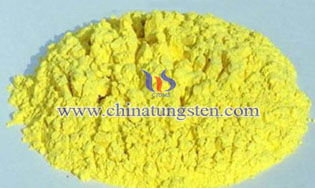Researchers Dig Deep Into North Dakota's Coal Seams for Rare Earths
- Details
- Category: Tungsten's News
- Published on Monday, 27 June 2022 10:42
- Hits: 510
North Dakota's lignite coal seams are rich in rare earths needed to produce touch screens for cell phones, missile guidance systems, and motors and batteries for hybrid vehicles.
Researchers knew that rare earth elements such as neodymium and lanthanum were present in the state's coal, but they wanted to find out if it was feasible to put them to use. “Many of these materials are more abundant on Earth than gold, and what makes them rare is that wherever you find them, their concentration is not very high. That makes them very difficult to extract in large quantities," said John Kay, an engineer with the Energy & Environmental Research Center at the University of North Dakota in Grand Forks.

Rare earths and critical elements exist in the periodic table and are associated with organic structures left behind by plants that have decomposed over millions of years to form coal seams. Kay leads a 20-member EERC team that will evaluate the potential of North Dakota's industry around rare earth elements, critical minerals, and carbon ores in the coming year.
Many people who work with coal are eager to learn about their discovery. Several coal mining companies and operators of coal-fired power plants have invested in the $2.45 million projects, which has received a $1.1 million award from the U.S. Department of Energy and a $750,000 grant through the State Industrial Commission.
Mike Holmes, vice president for research and development at the Lignite Energy Council, said, "You can extract and process rare earth elements from resources like lignite. You can also look for opportunities to start industries that make products that require rare earth elements."
"When a lot of people hear the word coal, they think you're talking about a fuel, but we're trying to go beyond that," Kay said. "There are multiple reasons for this. The coal industry faces economic challenges from natural gas and renewables. Advocates say the production of key minerals and rare earth elements can help sustain and create coal-related jobs. At the same time, the federal government wants to develop domestic mineral resources, which are in high demand by the electronics, defense, and automotive industries, among others."

Most of the world's supply of rare earth elements comes from China, which also manufactures products that utilize these materials. According to a report published earlier this year by Geological Survey, China has enacted production and export quotas over the past 13 years.
One of the factors that will determine the feasibility of producing these element is whether the prices of these materials remain high, the report notes that perhaps the most unpredictable variable is the future market price of each of the key mineral commodities, which typically fluctuate based on supply and demand.
Several entities have delved into the topic in recent years, including the Geological Survey, which has been collecting lignite samples in coal seams of western North Dakota for rare earths and key elements since 2015. Much of this work has involved collecting samples from southwestern North Dakota, where layers of lignite with high uranium concentrations were mined in the 1950s and 1960s.
- Rare Earth Manufacturer & Supplier, Chinatungsten Online: www.chinatungsten.com
- Tungsten News & Prices of China Tungsten Industry Association: www.ctia.com.cn
- Molybdenum News & Price: news.molybdenum.com.cn
- Tel.: 86 592 5129696; Fax: 86 592 5129797; Email: sales@chinatungsten.com








 sales@chinatungsten.com
sales@chinatungsten.com